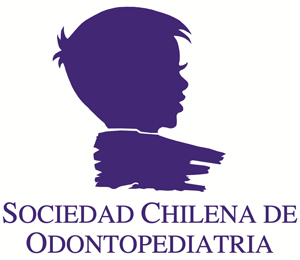Órgano oficial de difusión
científica de
Sociedad de Periodoncia
de Chile
Sociedad de Implantología Oral
de Chile
![]()
Sociedad de Prótesis y
Rehabilitación Oral de Chile

Sociedad Chilena de
Odontopediatría

Sociedad de Ortodoncia
de Chile

Federación Ibero Panamericana
de Periodoncia
![]()
Asociación Iberolatinoamericana
de Rehabilitación Oral (AILARO)
Indexada en:
Scielo, ScienceDirect,
Latindex, Redalyc
TRABAJO DE INVESTIGACIÓN
[PDF![]() ]
]
Evaluación a 5 Años de Dientes Pilares en Adultos Mayores
5-Years Follow Up of Abutments Teeth on Elderly Patients
E. Dreyer1, S. Maggiolo2
1Cirujano-Dentista, Especialista en Rehabilitación Oral. Profesor Asistente, Departamento de Odontología Conservadora, Facultad de Odontología, Universidad de Chile. Chile
2Cirujano-Dentista, Especialista en Endodoncia. Ayudante, Departamento de Odontología Conservadora, Facultad de Odontología, Universidad de Chile. Chile
Resumen
Propósito
Evaluar si la edad del paciente es un factor vinculante con el éxito de las terapias protésicas removibles expresadas en la sobrevida y estado de los dientes pilares
Método
Una cohorte de 300 adultos mayores rehabilitados mediante prótesis parcial removible (PPR)de base metálica bimaxilares se dividieron en 3 grupos i gual es según su edad en A, de 60 a 69 años, B, de 70 a 79 años y C, de 80 y más. Criterios de inclusión: desdentados parciales con más de 4 y menos del 9 dientes. Estar en soporte periodontal y libre de caries. Clasificados según la clasificación de Kennedy. Se observó pérdida de pilares, cambio de rol protagónico, presencia de obturaciones, nuevas obturaciones, terapia endodóntica, y trauma oclusal (TO). Adherencia a tratamiento en uso de los aparatos. Los resultados se tabularon por grupo y comparados entre sí con test Anova, los resultados de cada grupo y su comparación al inicio del estudio y cinco anos después fueron analizados con el testt pareado.
Resultados
Perdida de pilares entre los grupos A, B y C p= 0.000. Incremento en el número de caries y obturaciones entre los grupos A, B y C p=0.000. Pilares en TO entre los grupos A, B y Cp0.000. Incremento en los pilares con tratamiento de conducto entre los grupos A, ByC, p=0.000. 5 años después todos los pacientes usaban sus aparatos protésicos.
Conclusiones
Al aumentar la edad de los pacientes sobre los 70 años, se reduce la sobrevida y empeora el estado de los dientes pilares ya que aumentan la perdida de pilares, el numero de las restauraciones, terapias endodórticasy TO en los pilares remanentes.
Palabras clave
Sobrevida de pilares protésicos, seguimiento de pilares protésicos, prótesis removible en adultos mayores
Abstract
Purpose
Determine if the age of the patients is a fact related with success of removable partial dentures (RPDs) expressed in state and survival of their abutment teeth.
Methods
A cohort of 300 volunteers elderly patients rehabilitated by means of chromium-cobalt RPDs in booth maxillaries were divided in 3 equal groups, A, from 60to 69 years, B, from 70 to 79 years and C, from 80and more. Inclusion criteria: partially edentulous with at least 4to a maximum of 1 Steeth. Free of caries and in periodontal support therapy. They were classified by the Kennedy classification. Items observed were lost of abutments, changes in the protagonist role, presence of restorations, new restorations, root canal therapy, and oclusal trauma (OT). Adherence to treatment was expressed in the use of their RPDs. Results between groups viere analyzed wth anova, results of each group at the beginning and five years later were analyzed with paired t test.
Results
Lost of abutments between groups A, B and C p= 0.000. Increased in the number of caries and restorations of abutments between groups A, B and C p=0.000. Increased in the number of root canal treatments’ in abutments between groupsA, B and C p=0.000. Abutments in OT between groups A B and C, p=0.000. At 5 years recall all patients used their RPDs.
Amongst elderly patients, as the age increases over 70 years, a reduction in the survival and a worst condition of the RPDs abutments were observed.
Keywords
Survival of abutments, abutments follow up, elderly patients
El Texto completo solo está disponible en PDF 
Bibliografía
Recibido 19 agosto 2008, Aceptado 27 febrero 2009
Correspondencia autor: Facultad de Odontología, Universidad de Chile. Olivos 943. Independencia, Santiago, Chile.
Copyright © 2009.
Sociedad de Periodoncia de Chile, Sociedad de Implantología Oral de Chile y Sociedad de Prótesis y Rehabilitación Oral de Chile.